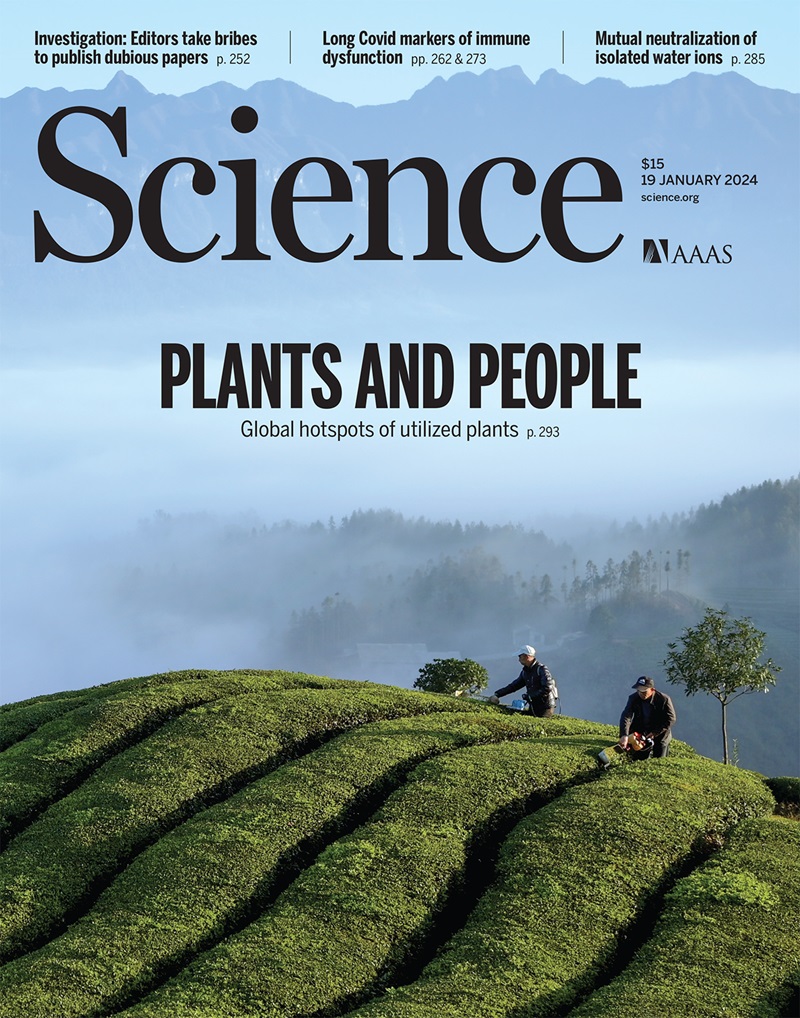A fungal ally wards off liver disease
IF 44.7
1区 综合性期刊
Q1 MULTIDISCIPLINARY SCIENCES
Science
Pub Date : 2025-05-01
引用次数: 0
Abstract
The human gut is home to trillions of microorganisms, collectively known as the gut microbiota. Most microbiota constituents are bacteria, which produce a diverse array of metabolites that signal to human cells or interact with enzymatic pathways to shape host biology. The microbiota also includes a range of commensal, mutualistic, and pathogenic fungi that, like gut bacteria, produce an abundance of metabolites. However, outside of a few well-studied toxin-producing pathogenic fungi, very little is known about how these fungal compounds interact with host cells to affect health. On page 491 of this issue, Zhou et al. (1) report a fungal species that resides in the human gut and produces a compound that protects against metabolic disease in mice. The findings point to intestinal fungi as a potentially rich source of beneficial chemical compounds that could be harnessed for human health.
真菌可以预防肝脏疾病
人体肠道是数万亿微生物的家园,统称为肠道菌群。大多数微生物群成分是细菌,它们产生多种代谢物,向人类细胞发出信号或与酶途径相互作用,形成宿主生物学。微生物群还包括一系列共生的、互惠的和致病的真菌,它们像肠道细菌一样,产生大量的代谢物。然而,除了一些被充分研究过的产生毒素的致病真菌外,人们对这些真菌化合物如何与宿主细胞相互作用从而影响健康知之甚少。在本期的第491页,Zhou等人(1)报道了一种存在于人类肠道中的真菌物种,它能产生一种化合物,保护小鼠免受代谢疾病的侵害。研究结果指出,肠道真菌是有益化合物的潜在丰富来源,可以用于人类健康。
本文章由计算机程序翻译,如有差异,请以英文原文为准。
求助全文
约1分钟内获得全文
求助全文
来源期刊

Science
综合性期刊-综合性期刊
CiteScore
61.10
自引率
0.90%
发文量
0
审稿时长
2.1 months
期刊介绍:
Science is a leading outlet for scientific news, commentary, and cutting-edge research. Through its print and online incarnations, Science reaches an estimated worldwide readership of more than one million. Science’s authorship is global too, and its articles consistently rank among the world's most cited research.
Science serves as a forum for discussion of important issues related to the advancement of science by publishing material on which a consensus has been reached as well as including the presentation of minority or conflicting points of view. Accordingly, all articles published in Science—including editorials, news and comment, and book reviews—are signed and reflect the individual views of the authors and not official points of view adopted by AAAS or the institutions with which the authors are affiliated.
Science seeks to publish those papers that are most influential in their fields or across fields and that will significantly advance scientific understanding. Selected papers should present novel and broadly important data, syntheses, or concepts. They should merit recognition by the wider scientific community and general public provided by publication in Science, beyond that provided by specialty journals. Science welcomes submissions from all fields of science and from any source. The editors are committed to the prompt evaluation and publication of submitted papers while upholding high standards that support reproducibility of published research. Science is published weekly; selected papers are published online ahead of print.
 求助内容:
求助内容: 应助结果提醒方式:
应助结果提醒方式:


